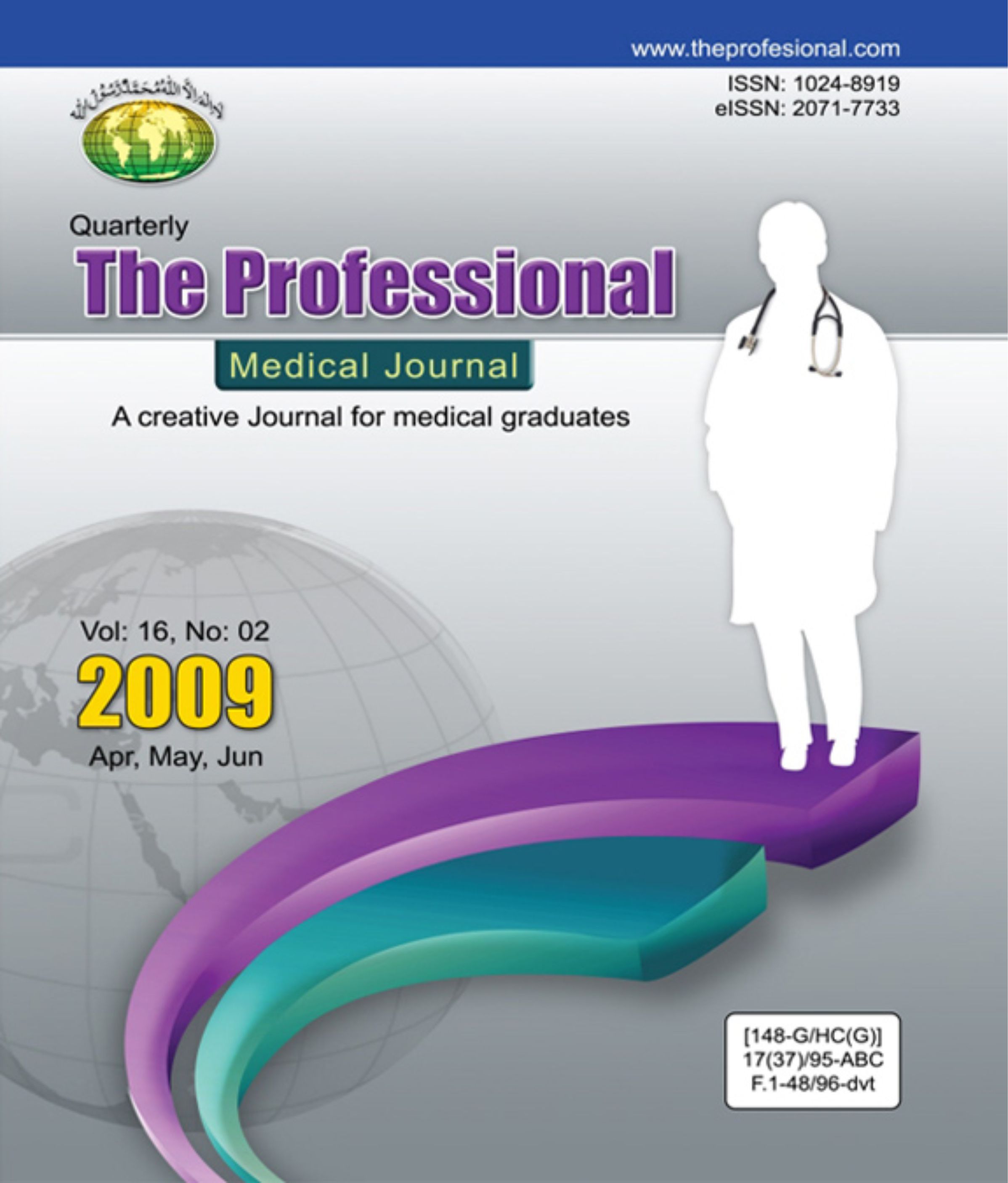NASAL BONE FRACTUR
DOI:
https://doi.org/10.29309/TPMJ/2009.16.02.2931Keywords:
Fracture Nose, closed reduction, rhinoplastyAbstract
b j e c t i v e : To analyze modes of presentation, types of the nasal fractures and their management. Setting and Period:
From 01 Apr 2006 to 31 Mar 2007 at Frontier Corps Hospital, Quetta. Patients and methods: This descriptive study consists of 50 patients
of both sexes and all age groups, managed for nasal bone fractures, presented in emergency as well as in outpatient department. Selection
of cases was non probability, convenient type. All patients were admitted in the hospital for evaluation and further management. Every case
of nasal fracture was properly evaluated, assessed and was managed accordingly. Diagnosis was based on proper history, thorough clinical
examination and radiological confirmation. Results: From this study it was concluded that adults (80%) were affected more than children.
Highest incidence was seen in the age group 18-30 years (46%). The male to female ratio was 3:1. The main aetiological factors in adults
were Sports injuries (30%), personal falls (24%), road traffic accidents (22%) and interpersonal assaults (20%) and in children personal falls
(24%). Most of the patients (90%) presented within 2 weeks of the nasal trauma. Epistaxis (92%), nasal deformity (76%), pain and
tenderness (72%) and nasal obstruction (70%) were main clinical features. Closed reduction under general anaesthesia (80%) was the most
common and effective treatment awarded and complications were minimal. Three cases who presented after 1 year of trauma were treated
by Septorhinoplasty (1), Septoplasty(1 )and SMR(1). 14%(7) patients were treated conservatively. Conclusion: Nasal bone fractures should
not be considered minor injuries until they have been thoroughly assessed. Closed reduction under GA is most effective treatment for the
patients presenting within 2 weeks of injury. Prognosis of un-complicated nasal fractures, in general, is good and they heal within 2-3 weeks
with good cosmetic and functional results.
Downloads
Published
Issue
Section
License

This work is licensed under a Creative Commons Attribution-NonCommercial 4.0 International License.


